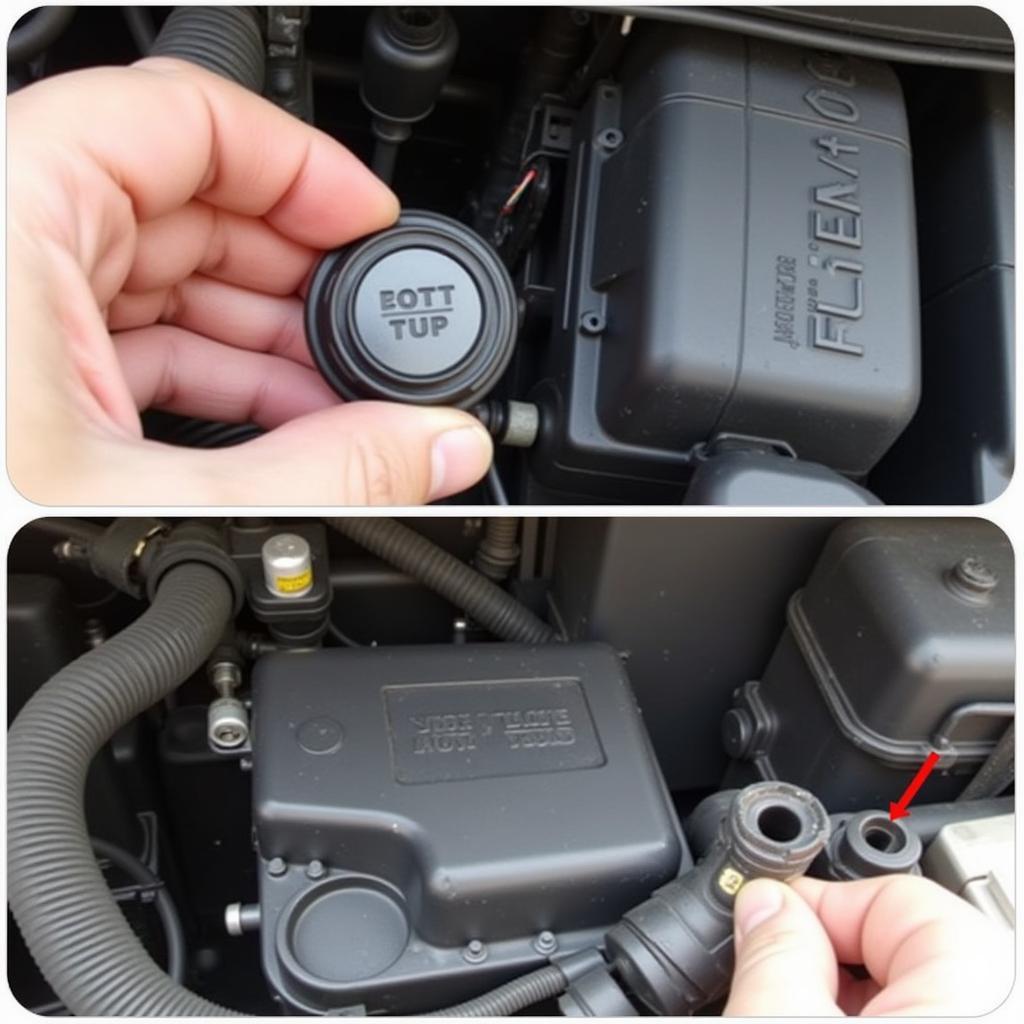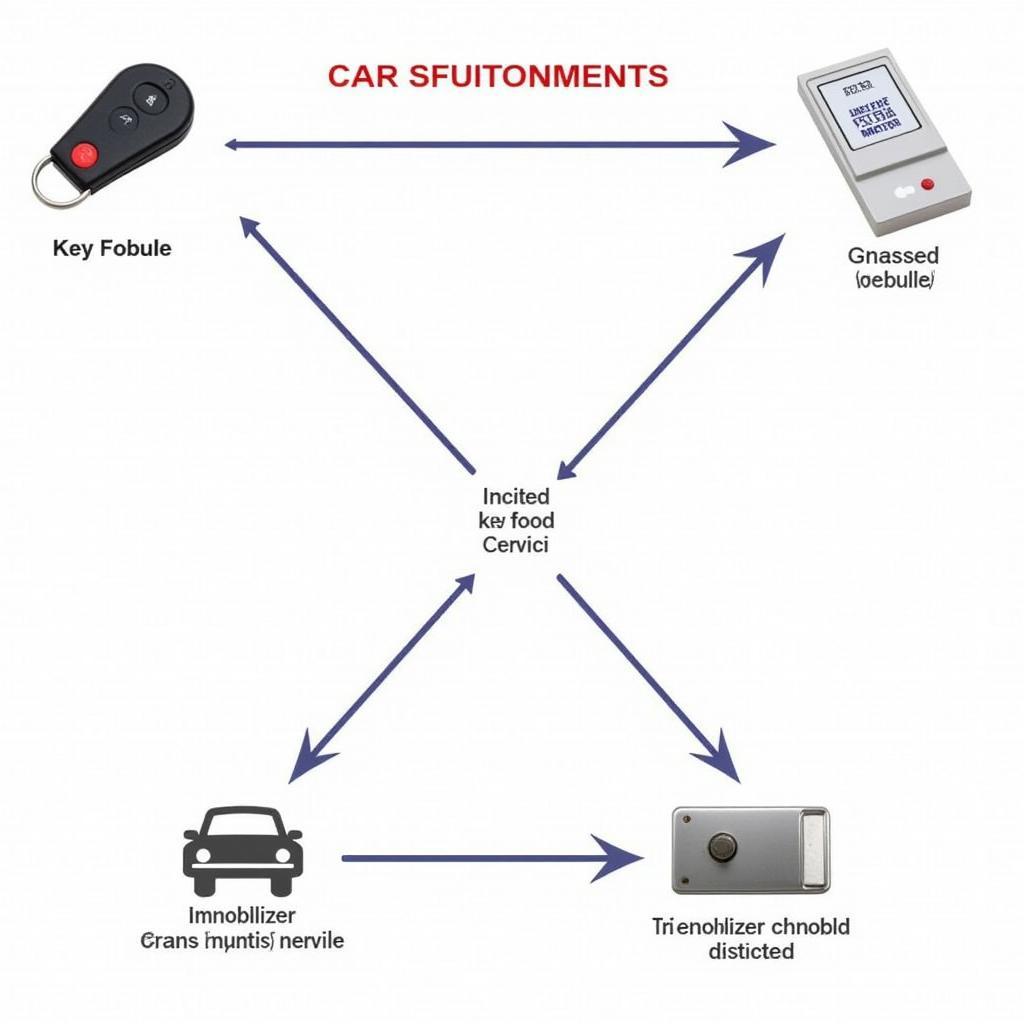The brake pad warning light on your 2008 Audi Q7 is designed to alert you of potential issues with your braking system. Ignoring this warning could lead to costly repairs or even dangerous driving conditions. This comprehensive guide will help you understand why your brake pad warning light is on and provide step-by-step instructions to troubleshoot the problem.
Understanding the Brake Pad Warning Light
The brake pad warning light, often symbolized by a circle with parentheses on either side, illuminates on your dashboard when the brake pad sensors detect wear beyond a certain threshold. This means your brake pads are nearing the end of their lifespan and require immediate attention.
Common Causes of a Brake Pad Warning Light
While worn brake pads are the most common culprit, several other factors can trigger the warning light on your Audi Q7:
- Worn brake pad sensors: The sensors themselves can wear out or become damaged over time, leading to a false warning.
- Damaged brake caliper: A malfunctioning caliper can cause uneven pad wear and trigger the warning light prematurely.
- Low brake fluid: Insufficient brake fluid levels can disrupt the hydraulic pressure needed for proper braking and illuminate the warning light.
- Faulty ABS system: Issues with the Anti-lock Braking System (ABS) can sometimes trigger the brake pad warning light, often accompanied by the ABS warning light.
Diagnosing the Problem
Before assuming your brake pads need replacement, it’s crucial to diagnose the exact cause of the warning light.
- Check Your Brake Fluid: Park your vehicle on a level surface and locate the brake fluid reservoir under the hood. Ensure the fluid level falls within the “Min” and “Max” markings on the reservoir.
- Inspect Your Brake Pads: If comfortable, carefully examine your brake pads through the spaces between the wheel spokes. Look for significant wear or if the pad material is close to the metal backing plate.
- Consult a Professional: If you’re unsure about your findings or suspect a more complex issue, seeking professional diagnosis from a qualified mechanic specializing in Audi vehicles is recommended.
 Checking the Brake Fluid Level in an Audi Q7
Checking the Brake Fluid Level in an Audi Q7
Addressing the Issue
The solution to your brake pad warning light depends on the root cause:
- Worn Brake Pads: If inspection reveals worn brake pads, replacing them is crucial. While it’s possible to replace brake pads yourself, seeking professional installation ensures proper fit and performance.
- Faulty Sensors or Wiring: Damaged brake pad sensors or wiring require replacement by a qualified mechanic.
- Low Brake Fluid: Refill the brake fluid reservoir with the appropriate DOT specification for your Audi Q7, as recommended in your owner’s manual.
- Other Issues: For complex issues like damaged calipers or ABS problems, immediate professional attention is essential for a safe and effective repair.
Preventing Future Issues
Proactive maintenance can help prevent future brake pad warning light issues:
- Regular Brake Inspections: Schedule routine brake inspections with a qualified mechanic, especially during regular maintenance services.
- Mindful Driving Habits: Avoid harsh braking and excessive speeding, which can accelerate brake pad wear.
- Quality Brake Pads: When it’s time for replacements, choose high-quality brake pads designed for your Audi Q7’s specifications.
Conclusion
Addressing the brake pad warning light on your 2008 Audi Q7 is essential for maintaining optimal braking performance and ensuring your safety on the road. By understanding the causes, taking steps for diagnosis, and addressing the issue promptly, you can enjoy many more miles of safe and confident driving. Remember, proactive maintenance and timely repairs contribute significantly to the longevity and reliability of your vehicle’s braking system.

